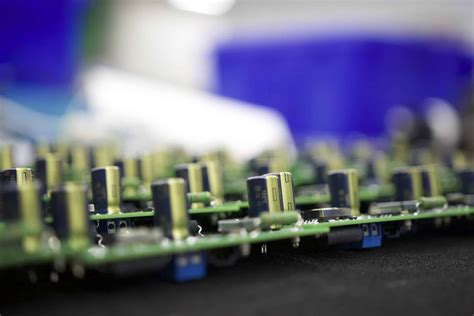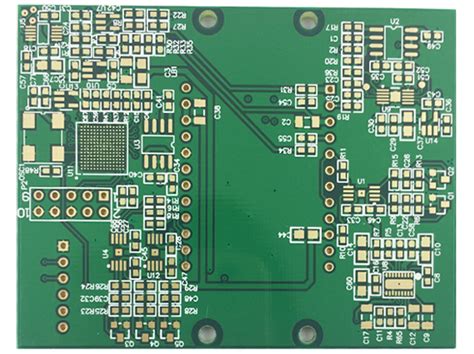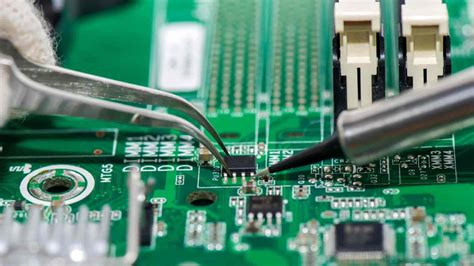China heavy copper pcb
Advantages Of China Heavy Copper PCB In High-Current Applications
China has emerged as a global leader in the production of heavy copper printed circuit boards (PCBs), which are increasingly being utilized in high-current applications. The advantages of using heavy copper PCBs from China in such applications are manifold, and understanding these benefits can provide valuable insights for industries seeking reliable and efficient solutions.
One of the primary advantages of China heavy copper PCBs is their exceptional ability to handle high current loads.
These PCBs are designed with thicker copper layers, typically ranging from 3 oz/ft² to 20 oz/ft² or more, which significantly enhances their current-carrying capacity. This is particularly beneficial in high-current applications where standard PCBs might fail due to excessive heat generation. The increased copper thickness allows for better heat dissipation, thereby reducing the risk of overheating and ensuring the longevity and reliability of the electronic components.
Moreover, the robust construction of heavy copper PCBs from China contributes to their mechanical strength and durability.
In high-current applications, the PCBs are often subjected to harsh operating conditions, including thermal cycling and mechanical stress. The enhanced structural integrity of heavy copper PCBs ensures that they can withstand these challenges without compromising performance. This durability translates into reduced maintenance costs and longer service life, making them a cost-effective choice for industries such as automotive, aerospace, and power electronics.
In addition to their mechanical and thermal advantages, China heavy copper PCBs offer superior electrical performance.
The thicker copper layers reduce the resistance of the conductive paths, which minimizes power loss and improves overall efficiency. This is particularly crucial in applications where energy efficiency is a priority, such as renewable energy systems and electric vehicles. By optimizing the electrical performance, heavy copper PCBs contribute to the development of more efficient and sustainable technologies.
Furthermore, the manufacturing expertise and technological advancements in China have led to the production of high-quality heavy copper PCBs at competitive prices.
Chinese manufacturers have invested heavily in state-of-the-art facilities and research and development, enabling them to produce PCBs that meet international standards and specifications. This combination of quality and affordability makes China an attractive source for heavy copper PCBs, providing industries with access to reliable products without incurring exorbitant costs.
Another noteworthy advantage is the customization options available with China heavy copper PCBs.
Manufacturers in China offer a wide range of customization services, allowing clients to tailor the PCBs to their specific requirements. This flexibility is particularly beneficial in high-current applications where unique design considerations are often necessary to optimize performance. Whether it involves specific layer configurations, hole sizes, or surface finishes, Chinese manufacturers can accommodate diverse needs, ensuring that the final product aligns with the intended application.
In conclusion, the advantages of China heavy copper PCBs in high-current applications are substantial.
Their ability to handle high current loads, coupled with enhanced mechanical strength and superior electrical performance, makes them an ideal choice for demanding environments. The combination of quality, affordability, and customization options further solidifies China’s position as a leading supplier of heavy copper PCBs. As industries continue to seek efficient and reliable solutions for high-current applications, the role of China heavy copper PCBs is likely to become increasingly significant.

Manufacturing Techniques For Heavy Copper PCBs In China
In recent years, the demand for heavy copper printed circuit boards (PCBs) has surged, driven by their ability to handle higher currents and endure extreme thermal conditions. China, as a global leader in electronics manufacturing, has become a pivotal player in the production of these specialized PCBs. The manufacturing techniques employed in China for heavy copper PCBs are both advanced and efficient, ensuring high-quality products that meet international standards.
To begin with, the manufacturing process of heavy copper PCBs in China involves several critical steps, each meticulously executed to ensure precision and reliability.
Initially, the design phase is crucial, where engineers utilize sophisticated software to create detailed layouts that accommodate the increased copper thickness. This stage is essential for optimizing the electrical performance and thermal management of the PCB. Once the design is finalized, the production process commences with the selection of high-quality raw materials, particularly copper, which is the cornerstone of these PCBs.
Subsequently, the etching process is adapted to handle the thicker copper layers.
Traditional etching techniques are insufficient for heavy copper PCBs due to the increased material volume. Therefore, Chinese manufacturers employ advanced etching solutions that can effectively remove excess copper without compromising the integrity of the board. This is achieved through a combination of chemical and mechanical processes, ensuring that the desired circuit patterns are accurately formed.
Following the etching process, the focus shifts to the plating stage, which is critical for enhancing the durability and conductivity of the PCB.
In this phase, additional copper layers are electroplated onto the board to achieve the required thickness. Chinese manufacturers utilize state-of-the-art electroplating equipment that allows for precise control over the deposition process. This ensures uniform copper distribution across the board, which is vital for maintaining consistent electrical performance.
Moreover, the lamination process in China is tailored to accommodate the unique requirements of heavy copper PCBs.
This involves pressing multiple layers of material together under high temperature and pressure to form a single, cohesive unit. The lamination process is carefully monitored to prevent defects such as delamination or misalignment, which could compromise the board’s functionality. Chinese manufacturers have invested in advanced lamination technologies that ensure high-quality outcomes, even for complex multilayer designs.
In addition to these core processes, quality control is a fundamental aspect of heavy copper PCB manufacturing in China.
Rigorous testing protocols are implemented at various stages of production to identify and rectify any potential issues. This includes electrical testing to verify circuit integrity, as well as thermal and mechanical testing to assess the board’s resilience under operational conditions. Chinese manufacturers adhere to international quality standards, ensuring that their products are reliable and meet the stringent requirements of global clients.
Furthermore, the integration of automation and digital technologies has significantly enhanced the efficiency and precision of heavy copper PCB manufacturing in China.
Automated machinery and robotics are employed to streamline production processes, reduce human error, and increase throughput. This technological advancement not only improves product quality but also reduces production costs, making Chinese heavy copper PCBs highly competitive in the global market.
In conclusion, the manufacturing techniques for heavy copper PCBs in China are characterized by a combination of advanced technology, meticulous process control, and stringent quality assurance. These factors contribute to the production of high-performance PCBs that are capable of meeting the demanding requirements of modern electronic applications. As the industry continues to evolve, China’s role in the global heavy copper PCB market is likely to expand, driven by ongoing innovation and a commitment to excellence.

Innovations In Thermal Management With China Heavy Copper PCBs
In recent years, the demand for efficient thermal management solutions in electronic devices has surged, driven by the increasing complexity and power density of modern electronics. Among the various innovations in this field, heavy copper printed circuit boards (PCBs) from China have emerged as a pivotal development, offering significant advantages in thermal management. These PCBs, characterized by their thick copper layers, are designed to handle higher currents and dissipate heat more effectively than traditional PCBs, making them indispensable in high-power applications.
The primary advantage of heavy copper PCBs lies in their enhanced thermal conductivity.
By incorporating thicker copper layers, these PCBs can efficiently transfer heat away from critical components, thereby reducing the risk of overheating and improving the overall reliability of electronic devices. This capability is particularly crucial in applications such as power electronics, automotive systems, and industrial machinery, where excessive heat generation can lead to component failure and reduced performance. Consequently, the adoption of heavy copper PCBs has become increasingly prevalent in these sectors, as manufacturers seek to enhance the durability and efficiency of their products.
Moreover, the use of heavy copper PCBs in thermal management is not limited to their superior heat dissipation properties.
These PCBs also offer improved mechanical strength, which is essential for applications subjected to harsh environmental conditions or mechanical stress. The robust construction of heavy copper PCBs ensures that they can withstand significant thermal cycling and mechanical loads without compromising their structural integrity. This durability makes them an ideal choice for applications that demand long-term reliability and performance, further solidifying their role in modern electronic design.
In addition to their thermal and mechanical benefits, heavy copper PCBs from China are also cost-effective solutions for manufacturers.
The advanced manufacturing techniques employed by Chinese PCB manufacturers allow for the production of high-quality heavy copper PCBs at competitive prices. This affordability, combined with the superior performance characteristics of these PCBs, makes them an attractive option for companies looking to optimize their thermal management strategies without incurring excessive costs. As a result, the global market for heavy copper PCBs continues to expand, with China playing a leading role in meeting the growing demand.
Furthermore, the versatility of heavy copper PCBs extends beyond their thermal management capabilities.
These PCBs can be customized to meet specific design requirements, offering flexibility in terms of layer count, copper thickness, and board size. This adaptability enables manufacturers to tailor their PCB designs to suit a wide range of applications, from consumer electronics to high-power industrial systems. The ability to customize heavy copper PCBs ensures that they can effectively address the unique thermal management challenges posed by different electronic devices, further enhancing their appeal to manufacturers worldwide.
In conclusion, the innovations in thermal management facilitated by China’s heavy copper PCBs represent a significant advancement in the field of electronics.
By offering superior heat dissipation, mechanical strength, and cost-effectiveness, these PCBs have become a cornerstone of modern electronic design, particularly in high-power applications. As the demand for efficient thermal management solutions continues to grow, the role of heavy copper PCBs in ensuring the reliability and performance of electronic devices is likely to become even more pronounced, underscoring their importance in the ever-evolving landscape of technology.

Cost-Effectiveness Of Sourcing Heavy Copper PCBs From China
When considering the procurement of heavy copper printed circuit boards (PCBs), the cost-effectiveness of sourcing from China emerges as a significant factor for many businesses. Heavy copper PCBs, characterized by their thick copper layers, are essential in applications requiring high current or enhanced thermal management. As industries increasingly demand these robust components, understanding the financial implications of sourcing from China becomes crucial.
China has established itself as a global leader in electronics manufacturing, and its PCB industry is no exception.
The country’s manufacturing infrastructure is well-developed, with numerous factories specializing in the production of heavy copper PCBs. This specialization allows Chinese manufacturers to achieve economies of scale, thereby reducing production costs. Consequently, businesses sourcing from China often benefit from competitive pricing, which can be a decisive factor in maintaining budgetary constraints.
Moreover, the cost-effectiveness of sourcing heavy copper PCBs from China is not solely attributed to lower production costs.
The Chinese government has implemented policies that support the electronics manufacturing sector, including tax incentives and subsidies. These measures further reduce the financial burden on manufacturers, enabling them to offer more attractive pricing to international buyers. Additionally, the availability of raw materials in China contributes to cost savings, as manufacturers can source copper and other essential materials locally, minimizing transportation expenses.
In addition to direct cost savings, sourcing heavy copper PCBs from China can lead to indirect financial benefits.
The extensive experience and expertise of Chinese manufacturers often result in high-quality products that meet international standards. This quality assurance reduces the likelihood of defects and the associated costs of rework or replacement. Furthermore, many Chinese manufacturers offer comprehensive services, including design support and technical consultation, which can streamline the production process and reduce time-to-market for new products.
However, while the cost advantages are compelling, businesses must also consider potential challenges when sourcing from China.
Communication barriers, time zone differences, and cultural nuances can complicate the procurement process. To mitigate these challenges, it is advisable for companies to establish clear communication channels and work with experienced intermediaries or local representatives who understand both the language and business practices.
Moreover, logistical considerations, such as shipping times and customs regulations, can impact the overall cost-effectiveness of sourcing from China.
Businesses should factor in these elements when calculating total costs and ensure that they have robust logistics strategies in place to manage potential delays or additional expenses.
In conclusion, the cost-effectiveness of sourcing heavy copper PCBs from China is influenced by a combination of factors, including competitive pricing, government support, and high-quality manufacturing capabilities. While there are challenges to navigate, the potential financial benefits make China an attractive option for businesses seeking to procure heavy copper PCBs. By carefully considering both the advantages and potential obstacles, companies can make informed decisions that align with their operational and financial objectives. As the demand for heavy copper PCBs continues to grow, China remains a pivotal player in the global supply chain, offering solutions that balance cost and quality.







